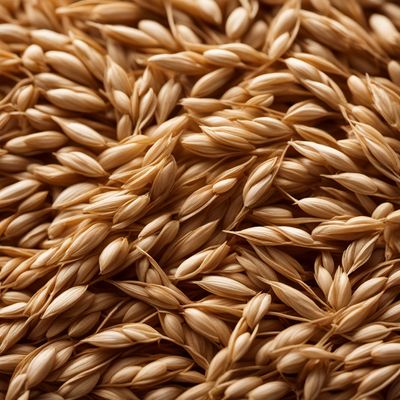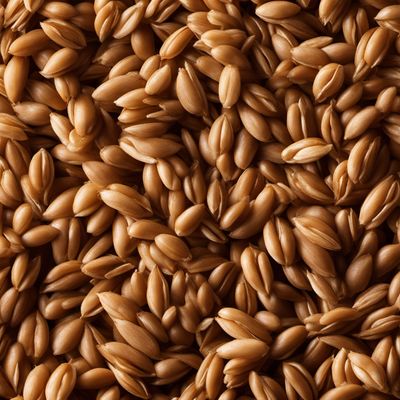
Ingredient
Wheat and similar-
The Tangy Jewel of Nature
Gooseberries are small, round berries that come in various colors, including green, yellow, and red. They have a tart flavor with a hint of sweetness, and their texture can range from firm to slightly soft. These berries are commonly used in jams, pies, desserts, and sauces, as well as in savory dishes like chutneys and pickles.
Origins and history
Gooseberries have a long history and are native to Europe, Asia, and North America. They have been cultivated for centuries and are particularly popular in British and Scandinavian cuisines. Gooseberries were traditionally used in medicinal remedies due to their high vitamin C content, which helped prevent scurvy during long sea voyages.
Nutritional information
Gooseberries are a good source of vitamin C, fiber, and antioxidants. They are low in calories and fat, making them a healthy addition to various dishes. Additionally, gooseberries contain small amounts of vitamins A and E, as well as minerals like potassium and manganese.
How to select
When selecting gooseberries, look for berries that are firm and plump, with a vibrant color. Avoid berries that are overly soft or have blemishes. The color of the berries can vary depending on the variety, so choose based on personal preference. If fresh gooseberries are not available, frozen or canned options can be used as substitutes.
Storage recommendations
To maintain the freshness of gooseberries, store them in the refrigerator in a breathable container or perforated plastic bag. They can be kept for up to a week, but it is best to consume them as soon as possible for optimal flavor and texture.
How to produce
Gooseberry bushes can be grown in gardens or containers, provided they receive ample sunlight and well-drained soil. They are relatively easy to cultivate and can be propagated through seeds or cuttings. Regular pruning and maintenance are necessary to ensure healthy growth and fruit production.
Preparation tips
Gooseberries can be enjoyed raw, but their tartness is often balanced by adding sugar or cooking them into various dishes. They are commonly used in jams, jellies, pies, tarts, crumbles, and sauces. Gooseberries can also be pickled or used in savory dishes like chutneys and curries. Experiment with different recipes to explore the versatility of this tangy jewel.
Substitutions
Raspberries, currants, or cranberries can be used as substitutes for gooseberries, although they may not provide the exact same flavor profile. Adjust the sweetness or tartness accordingly to match the desired taste.
Culinary uses
Gooseberries are widely used in British and Scandinavian cuisines. They are commonly found in traditional desserts like gooseberry fool, crumbles, and pies. In savory dishes, gooseberries are used to make chutneys, sauces, and pickles. They can also be incorporated into salads or used as a garnish for meat dishes.
Availability
Gooseberries are commonly cultivated in Europe, Asia, and North America. They are particularly popular in countries like the United Kingdom, Germany, Sweden, and India. Gooseberries can also be found in some parts of North America, such as the northeastern United States and Canada.
More ingredients from this category

Khorasan wheat grain
The Ancient Nutrient

Common wheat grain
The Versatile Staple: Common Wheat Grain

Emmer wheat grain
The Ancient Grain: Emmer Wheat

Durum wheat grain
The Golden Kernel

Spelt grain
The Ancient Nutritious Grain

Tritordeum
The Golden Grain: Unveiling the Wonders of Tritordeum

Einkorn wheat grain
Ancient Grains Rediscovered: Einkorn Wheat

Triticale grain
The Versatile Hybrid: Triticale Grain

Other species of genus Triticum, not elsewhere mentioned
Ancient Grains: Exploring the Lesser-Known Triticum Varieties